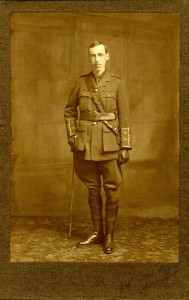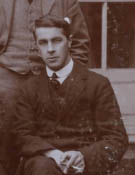In February 1915, three members of School Staff: Robert Leiper, Reginald Cockin and John Gordon Thomson, set off for Egypt to study bilharzia among the troops at the request of the War Office. Leiper, a helminthologist, led the expedition and had experience of studying this disease before the war. In 1914 Leiper was in charge of the first Wandsworth expedition of the School, investigating the mode of spread of trematode infections of man in the Far East, the outbreak of war made field work impossible and the expedition returned.
Bilharzia, also known as Schistosomiasis, is a type of infection caused by parasites that live in fresh water, such as rivers or lakes, in subtropical and tropical regions worldwide. The World Health Organization (WHO) reports that about 200 million people are infected with schistosomiasis worldwide. The disease is commonly found in Africa, as well as Asia and South America and is classified as a neglected tropical disease.
The expedition arrived in Egypt on 8 February. Leiper wrote a report of the expedition in 1918 which gives an official version of the work, with a few personal facts included. He writes ‘Within a month of our arrival Dr Cockin had fallen sick and was invalided home. Three weeks earlier I had been admitted to hospital with scarlet fever. It was not until the beginning of April that, foregoing my convalescence, I was able to start field investigations at Marg. Early in May the opening of the Gallipoli campaign, with its rush of wounded and the attendant excitement in Cairo, brought pressing local suggestions for the foreclosing of my mission.’ However the expedition continued until it was decided to transfer the work to London, Leiper left Egypt on 15 July 1915.
John Gordon Thomson decided to remain in Egypt for general service with the Royal Army Medical Corps. Thomson was a former colleague of Sir Ronald Ross’ and he worked with him in Alexandria later in 1915.
The LSHTM Archives hold the papers of Sir Ronald Ross, and included are many letters from colleagues who were serving overseas during the war, one of these letters was from Thomson to Ross, here we find out a bit more about the expedition (there are some words that are difficult to read, these are replaced by ?):
1st April 1915
Dear Sir Ronald Ross
The climate has still continues to be beautiful perpetual summer. Apart from our research, the country itself is absolutely full of interest. We have had a series of accidents. Leiper has had scarlet fever but he is now quite recovered and is now out of ? and back to work. Shortly after Leiper became ill, Cockin (Administrator from the School of Tropical Medicine) fell in some extraordinary fashion and fractured the base of his skull. It looks as if he had had an attack of ‘Petit Mal’. He is better now but is being sent home to England. I am glad he recovered so well. For a time therefore I was the only member of the expedition not in a hospital and I had to go about ? searching the canals and pools for molluscs.
We have found some rather interesting things although so far we have not got the human bilharzia. We have however found enough to show that forever observers like Looss and Sonsina have by no means exhausted the parasites occurring in molluscs.
It is very exhausting work here this sun especially travelling distances to search but it is extremely interesting. There are hundreds and thousands of troops here. Splendid fellows. The Australian and New Zealand horse and infantry have the finest physique I have ever seen. They are really a wonderful set of men and I am sorry for the Germans they get to close quarters with.
The letter continues to discuss the fact that there is no malaria where he is, what a nuisance the flies are and how everyone has been very kind. The letter can be viewed in the Archives, and there are other similar letters which give an insight into what life was like for the medical staff working in Africa and the Mediterranean during the war.
So what happened to these three staff members?
Robert Leiper is now acknowledged as having put helminthology on the map, and was connected with the School for 64 years until his death in 1969. In 1917 he was engaged by Board of Agriculture to investigate the mode of spread and control of “gapes” in poultry and of “eel-worm” in roots and crops – a matter of significant economic importance. After the war he continued to teach and helped to shape the policies and direction of the School. He was instrumental in gaining Rockerfeller funding and which enabled the School to building the Keppel Street building and become LSTHM.
After the bilharzia expedition, John Gordon Thomson became protozoologist to the Central Military Hospital in Alexandria and pathologist to the 17th General Military Hospital. On his return to England in 1918 he was put in charge of the malaria research laboratory at the War Office. After the war he was appointed to the Chair of Protozoology at the London School where he was able to use his extensive protozoological experience in his teaching.
On his return to London, Reginald Cockin resumed his duties at the School, first as Medical Entomologist and then as Deputy Director of the School as assistant to Alfred Alcock. He showed great promise and had a bright future ahead of him when he died suddenly and prematurely in 1918.
For further information, please contact the Archives at archives@lshtm.ac.uk



